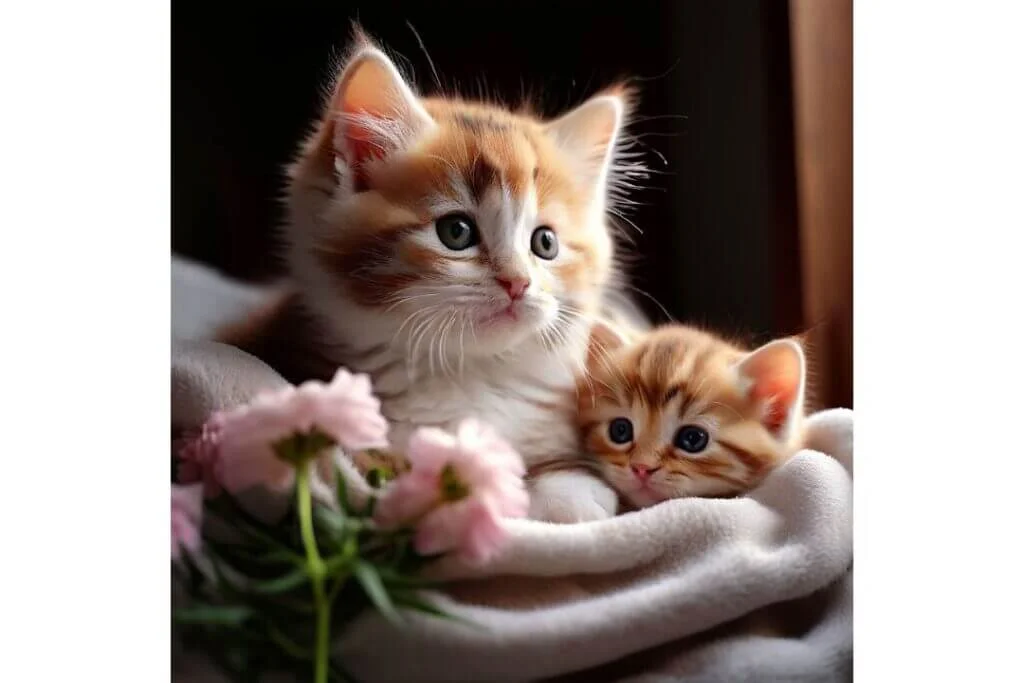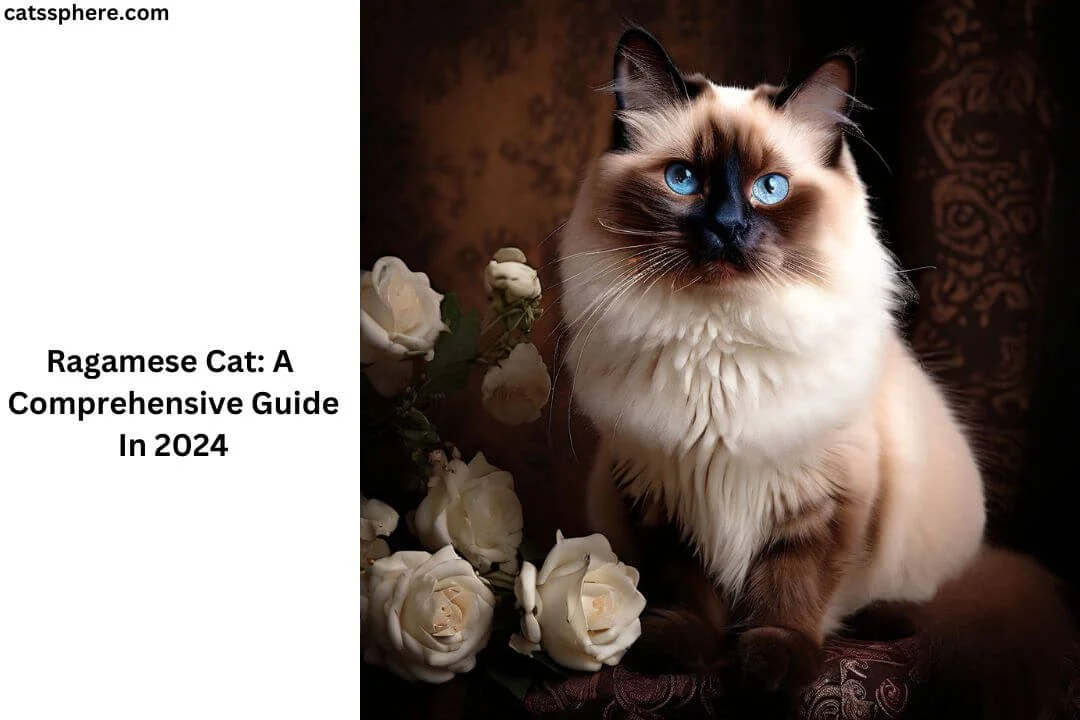Introduction to the Ragamese Cat
If you’re on the hunt for a feline companion that combines elegance, charm, and a bit of mystery, look no further than the Ragamese cat. This unique breed is a delightful mix that brings together the best traits of its parent breeds, offering an affectionate and strikingly beautiful pet. But what makes the Ragamese so special? Let’s dive in.
Physical Characteristics
General Appearance
The Ragamese cat is a hybrid breed, a cross between the Ragdoll and Siamese cats. This results in a medium to large-sized cat with a robust yet graceful build. Their body is muscular and well-proportioned, with a soft, plush coat that invites petting.
Size and Weight
Typically, Ragamese cats weigh between 8 to 15 pounds, with males generally being larger than females. Their size can vary depending on the genetic influence of either parent breed, but they usually maintain a balanced, athletic form.
Coat and Colors

One of the most captivating features of the Ragamese cat is its coat. They often inherit the silky, semi-long fur of the Ragdoll, combined with the striking color points of the Siamese. You can find Ragamese cats in various colors, including seal, blue, chocolate, and lilac, often with striking blue eyes.
Health and Wellness
Common Health Issues
While Ragamese cats are generally healthy, they can be prone to certain genetic conditions inherited from their parent breeds. These may include heart issues like hypertrophic cardiomyopathy (HCM), kidney problems, and dental issues. Regular vet checkups are crucial to catch and manage any health problems early.
Lifespan and Longevity
With proper care, Ragamese cats can live a long and healthy life, typically ranging from 12 to 15 years or more. Ensuring they have a balanced diet, regular exercise, and routine veterinary care can contribute to their longevity.
Regular Health Checkups
Routine veterinary visits are essential for maintaining your Ragamese cat’s health. Annual checkups, vaccinations, dental cleanings, and screenings for common feline diseases should be part of their healthcare routine.
Diet and Nutrition
Ideal Diet Plan
A balanced diet is vital for the overall health of your Ragamese cat. High-quality commercial cat food that is rich in protein and low in carbohydrates is usually the best choice. Wet food can also be included to ensure they stay hydrated.
Foods to Avoid
Avoid feeding your Ragamese cat any toxic foods, such as chocolate, onions, garlic, and certain artificial sweeteners like xylitol. Human foods that are high in fat or sodium should also be kept out of their reach.
Nutritional Supplements
In some cases, your vet may recommend nutritional supplements to support your cat’s health. Omega-3 fatty acids can promote a healthy coat, while probiotics may aid in digestion. Always consult with a vet before adding supplements to their diet.
Personality and Temperament
General Behavior
Ragamese cats are known for their friendly and sociable nature. They love to be around people and are often described as “dog-like” in their loyalty and affection. They are curious and playful but also enjoy lounging and being pampered.
Interaction with Humans
These cats form strong bonds with their owners and are typically very affectionate. They are known to follow their humans around the house, eager to participate in daily activities. Their gentle and loving nature makes them great companions for both individuals and families.
Compatibility with Other Pets

Ragamese cats usually get along well with other pets, including dogs and other cats. Their sociable and adaptable personality helps them integrate easily into multi-pet households, provided they are properly introduced and socialized.
Grooming Needs
Coat Care
Despite their semi-long fur, Ragamese cats have relatively low grooming needs. Regular brushing, about once or twice a week, will help keep their coat free of tangles and reduce shedding. During shedding seasons, more frequent brushing may be necessary.
Nail Trimming
Regular nail trimming is important to prevent overgrowth and splitting. Aim to trim your cat’s nails every few weeks. If you’re unsure how to do it, your vet or a professional groomer can show you the proper technique.
Dental Hygiene
Dental care is often overlooked but is crucial for your Ragamese cat’s health. Regular brushing with a cat-specific toothpaste and providing dental treats or toys can help maintain their oral health.
Training and Socialization
Basic Training Tips
Ragamese cats are intelligent and can be trained to follow basic commands and even perform tricks. Positive reinforcement, using treats and praise, is the most effective method. Start training sessions short and gradually increase the duration as your cat becomes more comfortable.
Socialization Techniques
Early socialization is key to ensuring your Ragamese cat grows into a well-adjusted adult. Expose them to different environments, people, and other pets from a young age. Positive experiences during this period can prevent behavioral issues later on.
Addressing Behavioral Issues
If your Ragamese cat exhibits undesirable behaviors, such as scratching furniture or being overly vocal, address these issues with patience and consistency. Providing scratching posts and engaging toys can redirect their energy positively.
Breeding and Reproduction
Breeding Practices
Breeding Ragamese cats should be left to experienced and responsible breeders who prioritize the health and well-being of the cats. Ethical breeding practices ensure that kittens are healthy and free from genetic disorders.
Caring for Pregnant Cats
If you have a pregnant Ragamese cat, provide a comfortable and quiet space for her to rest. Ensure she has a nutritious diet and regular veterinary care throughout her pregnancy.
Kitten Care

Newborn Ragamese kittens require special care. Keep them in a warm and safe environment, and monitor their growth and development closely. Regular vet checkups are essential to ensure they are healthy and thriving.
Living Environment
Indoor vs. Outdoor Living
Ragamese cats are best suited for indoor living. This protects them from various dangers, such as traffic, predators, and diseases. If you want your cat to experience the outdoors, consider setting up a secure outdoor enclosure or training them to walk on a leash.
Suitable Home Environment
Ensure your home is cat-friendly by providing plenty of safe spaces, high perches, and cozy resting spots. A well-enriched environment with interactive toys and scratching posts will keep your Ragamese cat mentally and physically stimulated.
Safe Spaces and Hiding Spots
Cats love to have their own private spaces. Provide hiding spots where your Ragamese cat can retreat and feel secure, such as cat trees, tunnels, or covered beds.
Exercise and Playtime
Importance of Physical Activity
Regular physical activity is essential for keeping your Ragamese cat healthy and preventing obesity. Interactive play sessions with toys that mimic prey, such as feather wands and laser pointers, can provide both exercise and mental stimulation.
Recommended Toys and Games
Ragamese cats enjoy a variety of toys, from simple balls and stuffed mice to more complex puzzle feeders. Rotating their toys regularly can keep them engaged and prevent boredom.
Mental Stimulation
Mental stimulation is just as important as physical exercise. Interactive toys that challenge your cat’s problem-solving skills, such as treat-dispensing puzzles, can keep their minds sharp.
Munchkin Ragdoll Cat: A Comprehensive Guide in 2024
Can Ragdoll Cats Eat Raw Chicken? A Comprehensive Guide In 2024
Traveling with Your Ragamese Cat
Preparing for Travel
If you plan to travel with your Ragamese cat, preparation is key. Get them accustomed to their carrier well in advance and ensure they are comfortable and secure during the trip.
Car Travel Tips

For car travel, secure your cat’s carrier with a seatbelt to prevent it from moving around. Take regular breaks on long journeys to offer water and a chance for your cat to stretch.
Air Travel Guidelines
Air travel with a cat requires additional planning. Check the airline’s pet travel policies and ensure you have an appropriate carrier. Visit the vet before the trip to ensure your cat is healthy and up-to-date on vaccinations.
Adoption and Buying Tips
Choosing a Reputable Breeder
When buying a Ragamese cat, research and choose a reputable breeder who follows ethical breeding practices. Visit the breeder’s facility, meet the kittens and their parents, and ask for health clearances.
Adoption from Shelters
Consider adopting a Ragamese cat from a shelter or rescue organization. Many purebred cats end up in shelters and are in need of loving homes. Adoption is a rewarding way to give a cat a second chance.
Initial Home Setup
Before bringing your new Ragamese cat home, set up a space with all the essentials, including a litter box, food and water dishes, scratching posts, and comfortable bedding. This helps your cat adjust to their new environment more smoothly.
Cost of Owning a Ragamese Cat
Initial Costs
The initial cost of acquiring a Ragamese cat can vary. Purchasing from a breeder may be more expensive, typically ranging from $500 to $1,500, depending on the cat’s lineage and quality. Adoption fees are generally lower, ranging from $50 to $200.
Recurring Expenses
Ongoing costs include food, litter, grooming supplies, and regular veterinary care. These expenses can add up to around $500 to $1,000 per year, depending on your cat’s specific needs and lifestyle.
Budgeting for Emergencies
It’s wise to set aside a budget for unexpected veterinary expenses. Pet insurance can help offset some costs, but having an emergency fund ensures you can provide the best care for your Ragamese cat in case of illness or injury.
Common Myths and Misconceptions
Debunking Myths
There are several myths surrounding Ragamese cats, such as they are difficult to care for or overly aggressive. In reality, they are loving, adaptable, and relatively low-maintenance with the right care.
Understanding Misconceptions
Understanding the truth about Ragamese cats can help potential owners make informed decisions. They are not hypoallergenic, but regular grooming can minimize allergens. They are also not prone to being destructive if provided with adequate mental and physical stimulation.
Conclusion

Ragamese cats are a delightful blend of beauty, intelligence, and affection. Their striking appearance and loving nature make them excellent companions for a variety of households. By understanding their needs and providing proper care, you can enjoy a long, happy life with your Ragamese cat.
FAQs
How do I introduce a Ragamese cat to my home?
Introduce your Ragamese cat gradually. Start by confining them to a single room with their essentials, then slowly allow them to explore more of the house. This helps them adjust without feeling overwhelmed.
What should I feed my Ragamese cat?
Feed your Ragamese cat a high-quality, balanced diet that is rich in protein. Wet food can help with hydration, and you can consult your vet for any specific dietary needs.
How much exercise does a Ragamese cat need?
Ragamese cats need regular physical activity to stay healthy. Engage them in interactive play sessions daily and provide toys that stimulate both their body and mind.
Are Ragamese cats good with children?
Yes, Ragamese cats are generally good with children. Their affectionate and gentle nature makes them great companions for kids, provided the children are taught to handle the cat gently and respectfully.
What are the grooming requirements for a Ragamese cat?
Ragamese cats require regular brushing to keep their coat free of tangles and reduce shedding. Nail trimming, dental care, and occasional baths are also part of their grooming routine.

